Leave Letter
There may be several reasons for writing a leave letter or a leave application. A student can write a leave letter to their schoolteacher or principal, an employee to their manager or HR, a teacher to their principal, and so on. In all these cases, it is important to inform and seek permission from your superior in a formal and respectful way.
Understanding how to write a clear and properly structured leave letter is useful for everyone, like students, parents, and employees. It not only helps you communicate your absence effectively but also builds essential formal writing skills. This article will teach you what a leave letter is, how to structure it, and how to write one effectively.
Table of Contents
- What is a Leave Letter?
- Why is a Proper Leave Letter Important?
- Reasons for Why You Are Applying for Leave
- Wrapping Up
- Frequently Asked Questions on Leave Letter
What is a Leave Letter?
A leave letter, also known as a leave application, is a formal letter that requests permission to take a leave of absence. People write it to request permission to be absent from school, college, or the workplace due to illness, events, family emergencies, or travel. Learning to compose a leave letter improves your English writing skills, which is helpful in both real life and tests.
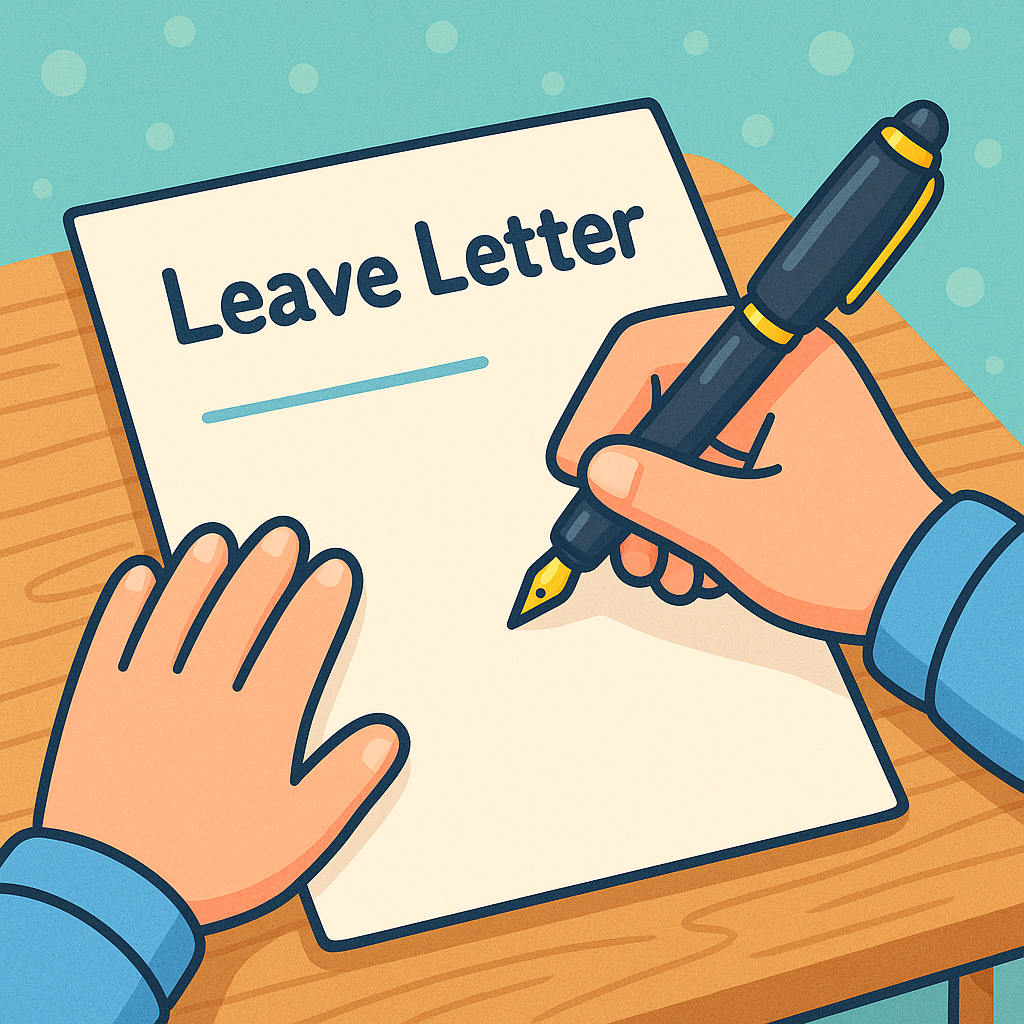
Writing leave letters has been a part of our lives since we were children, though the objectives have evolved with time. Whether it's informing a manager at work or a class teacher at school, a well-written leave letter helps ensure that responsibilities are managed smoothly during an absence. For younger children, a parent or guardian has to write a letter to their class teacher about their absence. So, it is highly important for everyone to know how to write a leave letter.
Why is a Proper Leave Letter Important?
Writing a proper leave letter may seem like a small task, but it plays a vital role in a student's academic career. Over time, it has become an essential part of communication, whether in school or at the workplace. Informing someone about your absence through a written letter reflects maturity and good manners. It's more than just a formality; you can make it a habit to help you develop life skills and mutual respect. So, let’s see why it matters:
Shows Responsibility
Submitting a leave letter shows that the student is responsible and understands the importance of informing the school about their absence.
Keeps the School Informed
It allows the school or teacher to know why the student is absent and how long they will be away, helping them stay updated.
Helps Maintain Attendance Records
Schools keep track of student attendance. If you are submitting the letter, it serves as an official record that explains the reason for missing classes.
Professional Relationships
A courteous, well-formatted leave request demonstrates respect for your colleagues and supervisors, helping maintain positive professional relationships even during your absence.
Avoids Misunderstandings and supports planning
Without a proper explanation, an absence may be seen as careless. A leave letter clears up any confusion. Teachers or managers can plan their work, presentation, or rescheduling based on who is present and who is on leave.
Reasons for Why You Are Applying for Leave
If you are writing a formal letter or an email, the proper leave application generally includes the following structure:
Your Basic Information: Your name, address, phone number, and email address.
Date: The date the application is being written.
Recipient's Information: The name, title, and address of your supervisor or the HR Department.
Salutation: You should add a formal greeting such as ‘Dear [Recipient's Name]’.
Subject Line: A clear and concise statement of the letter's purpose, e.g., ‘Leave Application - [Your Name] - [Dates]’.
Opening Paragraph: Briefly write the purpose of your letter (requesting leave) and the reason behind the leave.
Body of the Letter:
You should clearly mention the specific dates (make them bold, which is optional) or the duration of the leave.
Write a brief, honest explanation for the leave without going into excessive personal details.
Detail your plans for managing your responsibilities during your absence, including any delegation to colleagues or plans to complete pending tasks.
Mention how you can be reached for urgent matters while you are away.
If applicable, offer to provide supporting documentation (e.g., a doctor's note for sick leave).
Closing Paragraph: You can express gratitude for considering the request and your appreciation for their understanding.
Formal Closing: Use a professional closing, such as "Sincerely" or "Best regards."
Signature: Your handwritten signature (for letters) or typed name (for emails).
This format is a simple yet effective leave letter format for students that makes your application neat and easy to read.
Here are some tips for writing an effective leave application.
Keep it concise and to the point.
Make sure the tone is respectful and professional.
Before you begin writing, review your company's leave regulations.
Check for problems before sending or submitting.
Submit your application in advance, following the company's requirements for the type of leave requested.
If you are looking for the right way to request leave, below are the sample leave letters written specifically for various needs. Whether you're a student, parent, teacher, or working professional. Use these examples as a helpful guide to draft your effective leave letter.
Sick Leave Letter to the Class Teacher

Leave Letter to the Principal – Family Function
.webp)
Leave Application for College – Personal Reasons
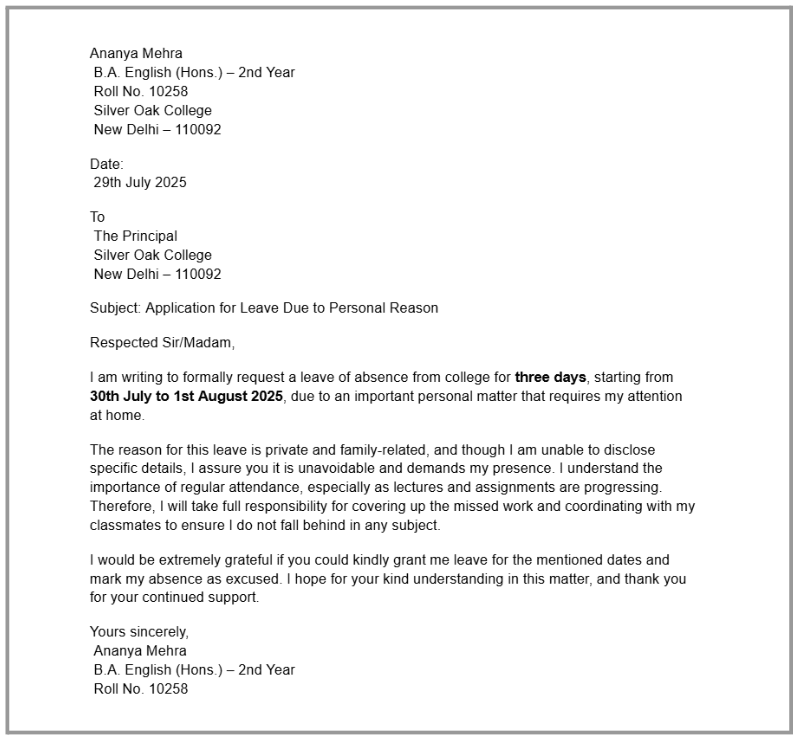
Leave Application for School From Parents
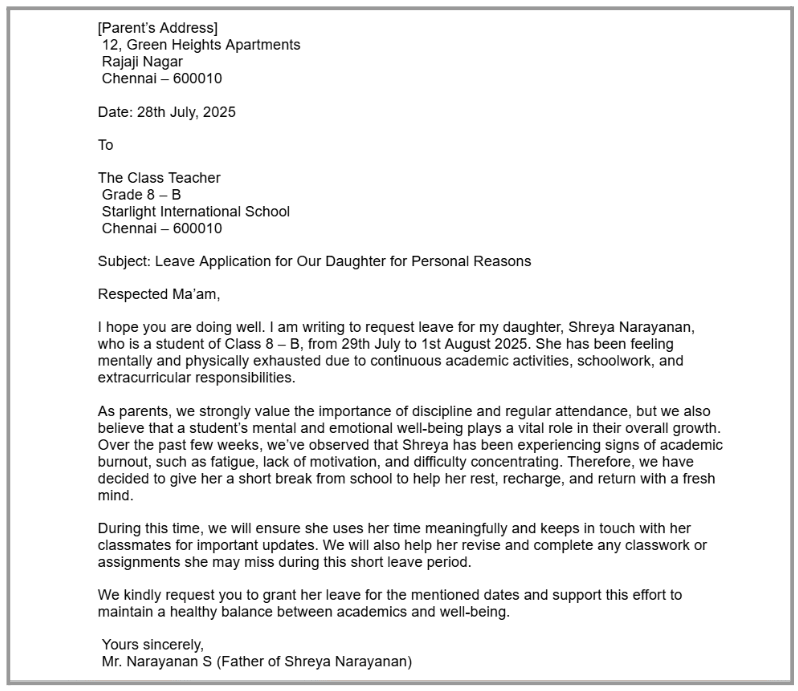
Sample Leave Letter to the Class Teacher – Family Trip
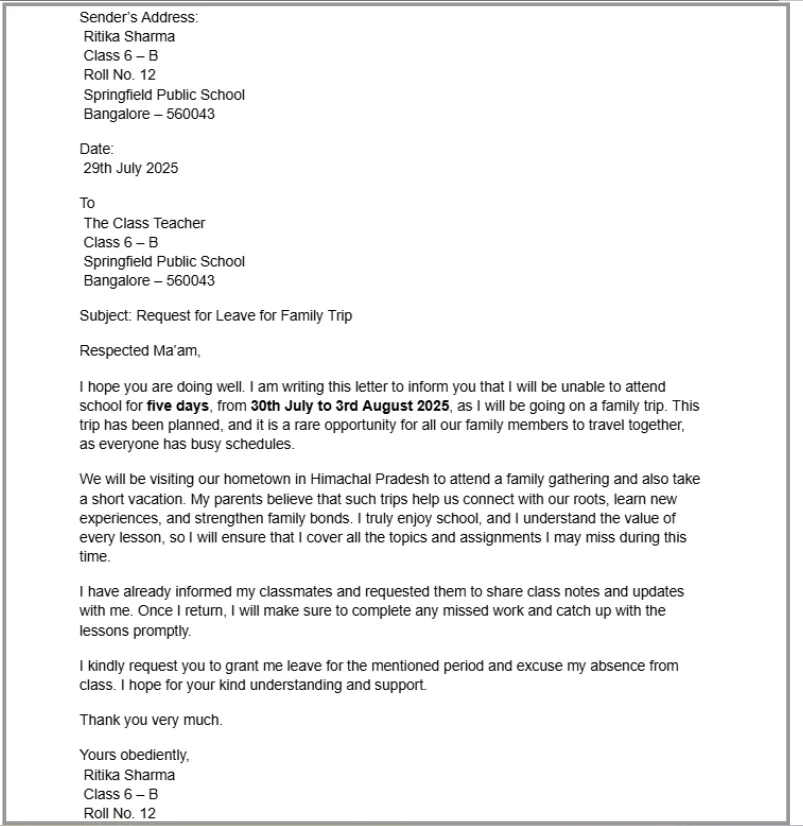
Letter to HOD Requesting for Medical Leave
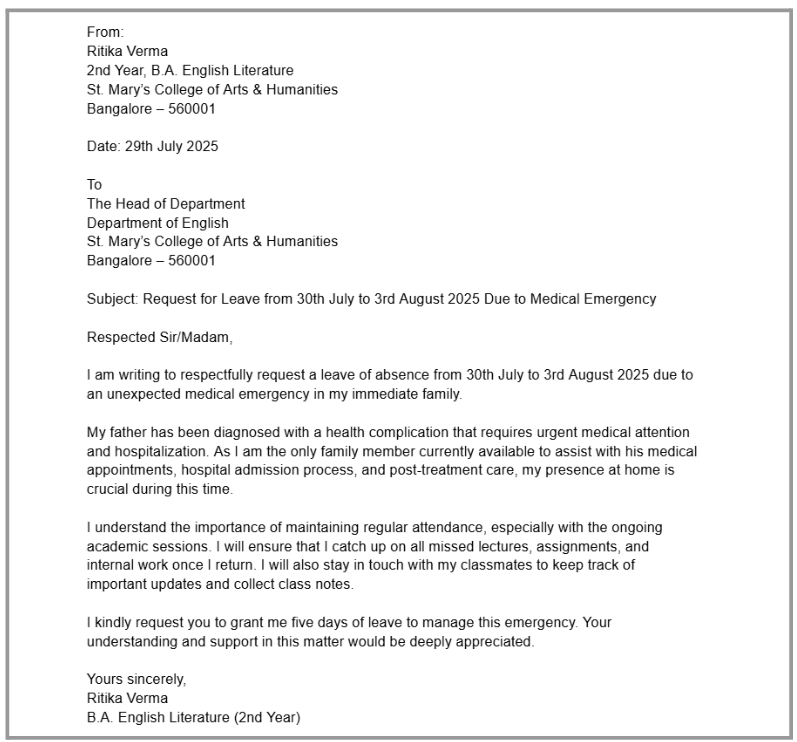
Leave Letter to Principal Requested by Teacher
.webp)
Sample Sick Leave Letter to the Manager
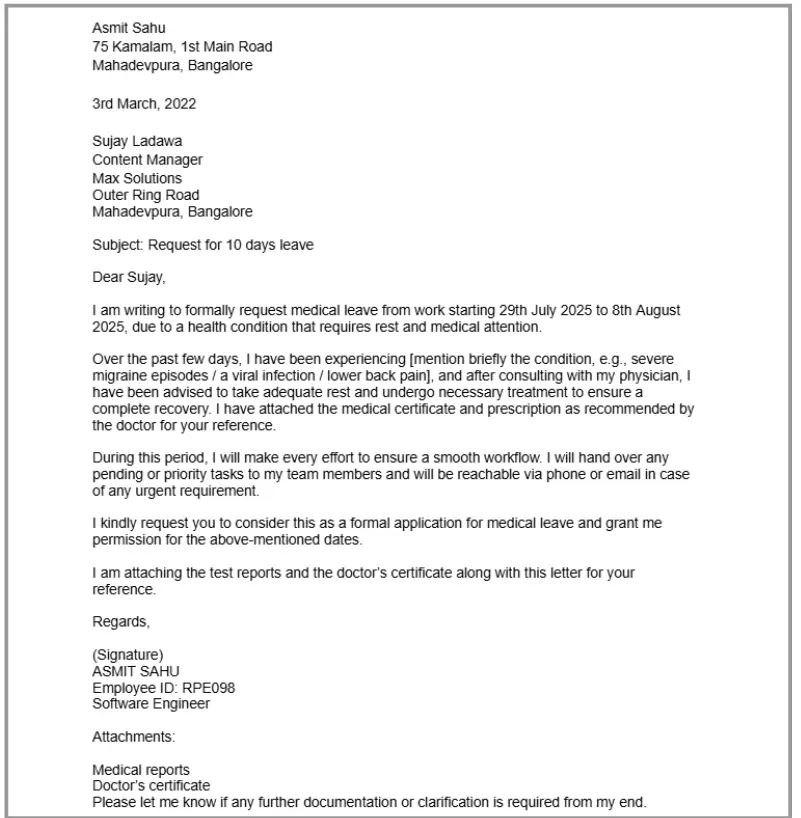
Wrapping Up
Writing a leave letter is an important life skill that teaches responsibility, respect, and clear communication. Whether you are a student seeking leave from school, an employee requesting time off from work, or a parent writing on behalf of your child, following the correct format ensures your request is taken seriously.
You can also refer to our detailed guides on letter writing, apology letter, and letter to the principal for more examples and tips that will help you write effective letters for school and other formal needs.
Frequently Asked Questions on Leave Letter
Q1. How do I write a leave letter for one day?
Answer: I am writing to request a one-day leave on [specific date] due to [brief reason, e.g., personal matters, a medical appointment]. I have ensured that my tasks are up-to-date, and I will complete any pending work before my leave. If there is an urgent matter, you can reach me at [your contact information].
Q2. How do you write a letter to your school for leave?
Answer: I am [Your Name], a student of Class [Your Class], Section [Your Section], Roll No. [Your Roll Number]. I am writing to inform you that I am unwell and have been advised to complete rest by the doctor for [number of days] days. Therefore, I request you to kindly grant me leave from [start date] to [end date].
Q3. How to write a leave letter to the principal?
Answer: Dear [Principal's Name], I am writing to formally request a leave of absence for [number of days] days, from [start date] to [end date]. The reason for my leave is [briefly explain your reason, e.g., ‘to attend a family wedding in another city’].
Read This Next: How to Write a Permission Letter: Format, Samples, and More!
Admissions Open for
Admissions Open for
CBSE Schools In Popular Cities
- CBSE Schools in Bangalore
- CBSE Schools in Mumbai
- CBSE Schools in Pune
- CBSE Schools in Hyderabad
- CBSE Schools in Chennai
- CBSE Schools in Gurgaon
- CBSE Schools in Kolkata
- CBSE Schools in Indore
- CBSE Schools in Sonipat
- CBSE Schools in Delhi
- CBSE Schools in Rohtak
- CBSE Schools in Bhopal
- CBSE Schools in Aurangabad
- CBSE Schools in Jabalpur
- CBSE Schools in Jaipur
- CBSE Schools in Jodhpur
- CBSE Schools in Nagpur
- CBSE Schools in Ahmednagar
- CBSE School In Tumkur











